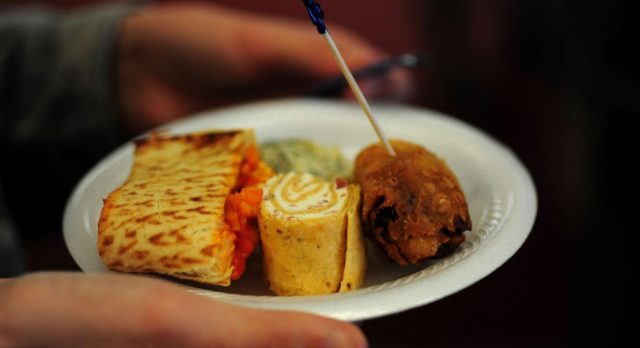It seems like just about everyone wants to cut calories. It’s one of the most-suggested methods for weight loss. And no matter which diet you look at, their first goal seems to be cutting down on your calories.
But that isn’t always what you want. And it might even be the exact opposite of what you need.
In these cases, the usual advice obviously won’t work. As if that weren’t frustrating enough, most people resort to “just eat or drink whatever you want” as an alternate suggestion.
Of course, in a world where calorie reduction is the typical focus, eating “anything you want” sounds like a dream come true. But most of the time, it isn’t very healthy.
People who want or need to increase their caloric intake are usually among those most focused on health, for one reason or another. For people suffering from cancer or anorexia, they medically need to improve the amount of calories gained each day. And, for that reason, they need healthy ways to increase their calorie count.
The following tips will help you increase your calorie count while keeping your overall health in mind. And, best of all, most of the suggestions are absolutely delicious. From fermented foods that help keep your stomach running smooth to the healthiest fats the natural world can offer, there’s something for everyone.
Focus on Healthy Fats
Fats are calorie-dense. This means that, ounce for ounce, you’re going to get more calories from fats than you will from starches or proteins.
While this is great for people who want to increase their daily caloric intake, there’s a catch. Most fats aren’t exactly good for you.
For a long time now, most people have treated all fat the same. It became a sort of modern bogeyman.
But we now know that some fats are actually good for you. In fact, the entire premise of the keto diet—which started as a medical diet—is that your body uses fat as fuel. For some people, this makes your body run better than burning carbohydrates for fuel.
If you choose to focus on fats for your caloric needs, make sure you’re reaching for healthier options. Butter, cheese, and red meat all offer a lot of delicious flavor with their fat. However, they can also lead to clogged arteries and serious health problems if they make up the bulk of your diet for too long.
Instead, reach for olives or avocados. Both foods pair well with nearly anything and are easy to toss on top of salads, pizzas, or sandwiches.
Fish is another great source of healthy fats. Salmon is the most popular fatty fish, and for good reason. It is packed with omega fatty acids and so easy to prepare.
This baked lemon salmon is a particular family favorite at my house. Paired with rice and some steamed veggies, it is the perfect meal for a busy weeknight.
Consider More Dairy
While dairy doesn’t offer the healthiest fats around, it’s still something you will want to consider when you’re increasing your calorie count. While low-fat options may not pack the same punch, they will still give you an added calorie boost and a wider range of flavors to work with.
Dairy also offers the added bonus of bringing in a lot of options for probiotic foods. Foods like kefir and yogurt are great ways to get the probiotics you’ll need to make sure your gut is functioning as well as it can.
You might be skeptical about probiotics. After all, there’s been a lot of hype around them that simply isn’t true.
But probiotics are incredibly helpful, especially if you tend to have trouble with digestion. They boost your body’s ability to get nutrients from the food you eat, which means that you use your food more effectively.
And if you’re focused on calories, there’s a good chance you want your food to do as much as possible for you! So, check out these “live” foods that burn fat and keep your digestive system running smoothly.
Remember to Snack
Another common health tip you’ll want to ditch is the idea that you shouldn’t snack. “Snacking” and “grazing” are both terms that people use when they talk about eating every few hours.
Although some people try to break this habit so they don’t accidentally overeat, you might want to make it part of your routine in order to increase your caloric intake.
Your stomach can only handle so much food at once. So, when you limit your calorie intake to big meals, your own body is going to limit exactly how much you can eat.
Snacking or grazing works around this issue. You’re still going to eat a full meal when you sit down, but you get a little extra calorie boost between meals as well.
Of course, it’s all about which snacks you choose. Nuts are a great option, since they’re high in protein and healthy fats. You can eat them whole or opt for a natural nut butter on some fruit or crackers.
If you’re allergic to nuts—or just don’t like them—you can reach for some cut cheese and veggies. Dairy might not be the healthiest of fats, but it makes for a good treat. And when you pair it with fiber-dense veggies, you’re going to get a lot of nutritional bang for your snacking buck.
The Takeaway
Trying to add calories to your diet might not be the most common practice right now. But, for some people, it is what works best for their bodies.
As long as you’re not opting for chips and ice cream at every meal, there is no reason that increasing your calories can’t be a healthy experience.
If you focus on healthy fats and whole, natural foods, you’re going to get better results than you will from a stroll down the candy aisle. Fish, nuts, and olives are all delicious and versatile foods just waiting to find their way into your kitchen.
And with probiotics like yogurt and kefir, you’ll have a whole spectrum of foods to choose from. With a little experimentation, you’ll soon be hitting your calorie goals in flavorful style!

A professional writer with over a decade of incessant writing skills. Her topics of interest and expertise range from health, nutrition and psychology.




